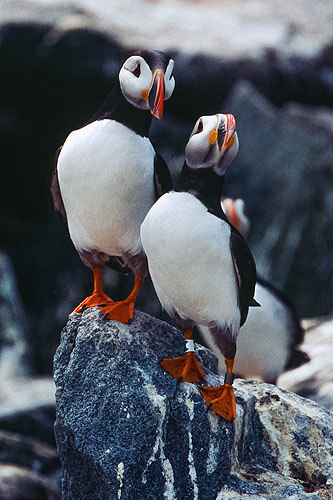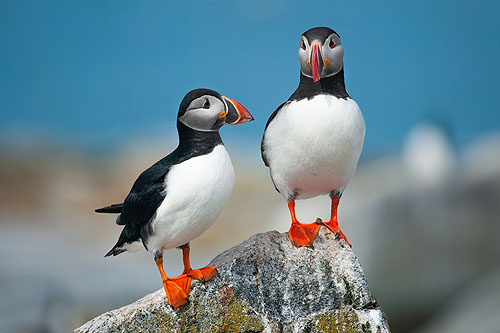Blog Posts
By Year
20242023
2022
2021
2020
2019
2018
2017
2016
2015
2014
2013
2012
2011
2010
2009
2008
2007
2006
2005
2004
2003
2002
2001
2000
1999
1998
| Little Brothers revisited | [Next Page - Always tweaking] |
| August 18, 2018 [Photos] | |
I've been posting photographs on the internet for more than 20 years. At first, the only way I could get SLR quality in a digital image was to shoot it on film, get it printed, and scan the print on a flatbed. The first digital SLRs circa 2000 were quite costly and I thought one way to put off that major expense was to invest in a film scanner. After a false start with a cheaper product, I settled on a Minolta Dimage Elite Pro, which was merely rather expensive versus an insanely expensive DSLR. In 2002 after coming back from an air show in England with 16 rolls of film, I got REALLY sick of scanning. A few months later I took the digital plunge with my first Canon DSLR, the 1D. But I still had my good Canon film cameras and continued to shoot some film for a few more years, perhaps in part to justify buying that film scanner. In August 2004 I took my most successful photo trip ever, to Machias Seal Island in the Gulf of Maine to shoot puffins. This trip resulted in the only image I've ever bothered to title, "Little Brothers," which was on the cover of the 2010 book "Nothin' but Puffins: And Other Silly Observations" by John McDonald, still available on Amazon.com. The Latin name for the Atlantic puffin, Fratercula Arctica, translates as "Little Brother of the North." Another 20 of my puffin images are inside the book. All of the puffin images in the book and on my web site are from the digital SLR. Recently I purchased VueScan scanning software which has breathed new life into my now-vintage Minolta film scanner. I'm certainly not shooting any new film images. The Canon film cameras are long gone. I do have a couple of vintage Pentax SLRs and a few lenses, but there is no temptation to take them off the shelf and put them back into production. I got the new software to deal with hundreds of old family photos on black & white negatives and color slides. VueScan has improved the scanning process, although it remains tedious. Yesterday I came across a box of slides from the 2004 Machias trip. I suppose back in the day I picked out the best digital images from that trip for web posting, and when the slides came back later I didn't feel like scanning. Looking back through my archives, I found only one scan. When the publisher asked for images for the book six years later, I didn't even remember that I had slides. I scanned a few batches today and came up with 12 new images for the web site. One thing worth remembering is the Canon 1D only had a 4.1 megapixel sensor. (I was hoping to get the new 8.2mp 1D Mark II delivered before the Machias trip, but alas it didn't come until after I got back.) The 35mm slides I scanned today at 4800 dpi resulted in 27.8mp images, almost 7x larger than those original 1D images. It can be debated whether the scanned images have 7x the resolution of the digital images, but to my eye the scans would have been more than good enough to be in the book. The ISO was probably 200, so there is some film grain, but that's not necessarily a bad thing. Click on the image to start the slide show of new images, which eventually loops back into the images originally posted in 2004. This may be an old man yelling "Get off of my lawn," but when hands-on photography meant chemicals and darkrooms, and consumer photography meant a trip to the store and waiting days to see your photos, there were a lot fewer photographs taken. I actually had the title of photographer at a weekly newspaper 35 years ago and my relatively basic equipment was better than what 99% of the population had. Even though the club is less exclusive now, I don't want to go back. Digital photography is a modern wonder if for no other reason than automatic white balance. Scanning the old B&W negatives is no big deal since white balance is not a factor and you can get a good exposure by adjusting three sliders on a histogram. I could teach someone to scan B&W negatives in 30 seconds. Color on the other hand introduces far more variables, complicated by the fact that our brains interpret strong white daylight and soft yellow artificial light differently. Even though I did the darkroom and chemicals at the newspaper, I only did B&W. Our chief photographer did color only a few times a year. Color processing required very precise temperature control and attention to detail. The Minolta is actually my second film scanner. The first one was so awful with color that I eventually gave up and passed it along to some other poor sucker on eBay. The Minolta/VueScan combination often (but not always) produce a good color balance automatically, and I also can do some additional tweaking in Photoshop Elements 14, as was necessary with the puffin scans. Digital images shot with automatic white balance rarely need color adjustment. Still, getting the **perfect** color balance remains elusive. Viewed on their own the color of the puffin slide scans and the digital images are quite acceptable, but side by side you can see color differences. At this point I'm going to leave it at that. | |
Top Menu | Destinations | Years | Species | Aircraft, etc. | Blog | Contact Info
All photos ©1998-2024 by Thomas O'Neil

